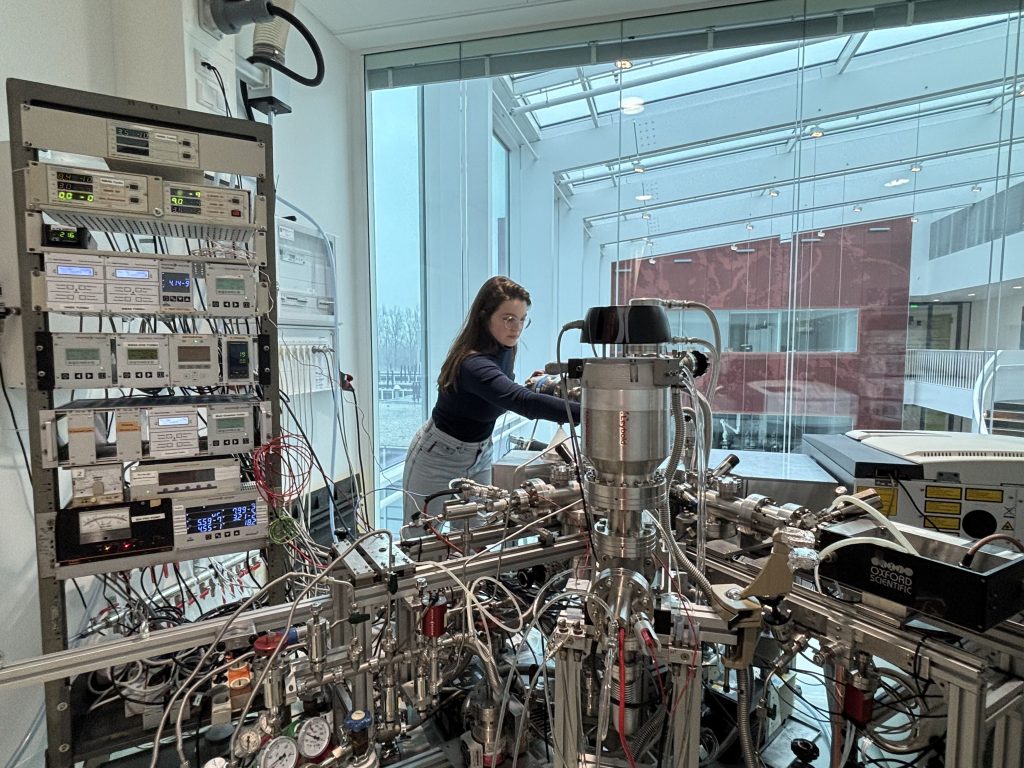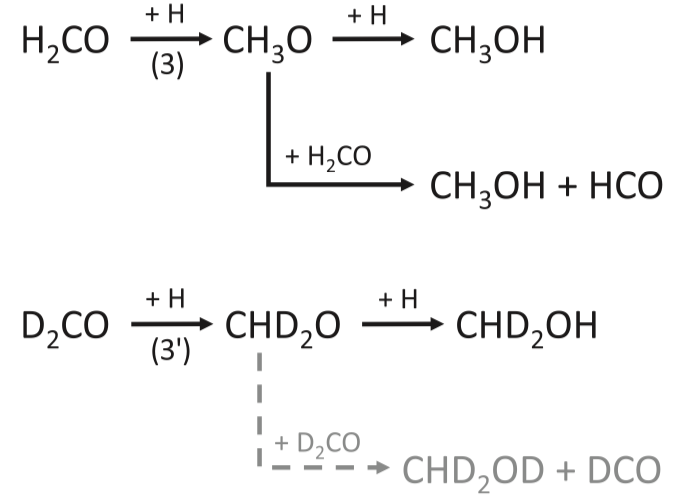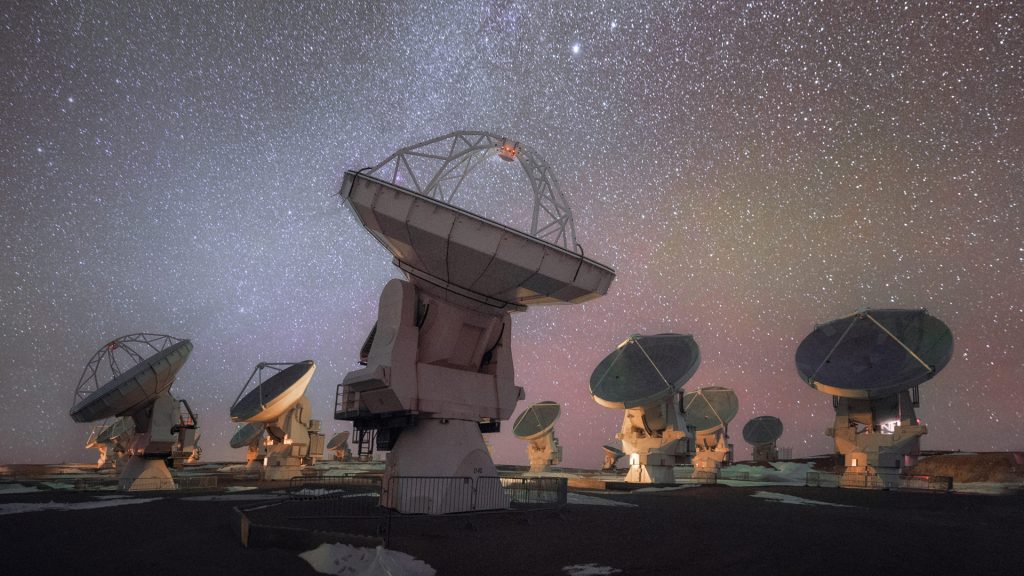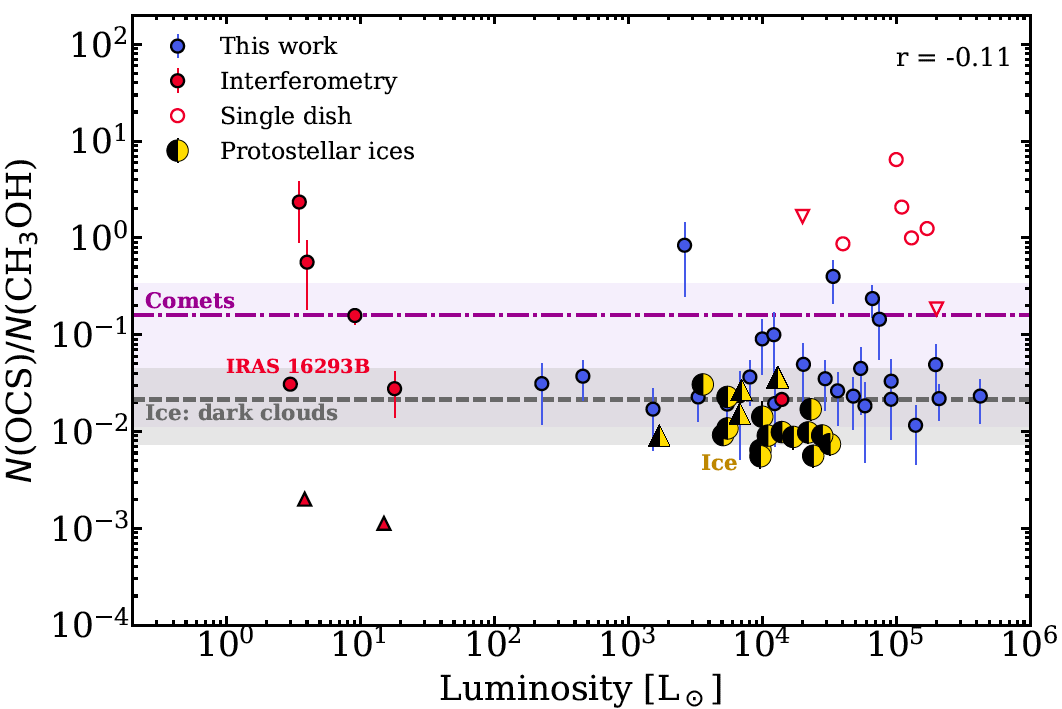Laboratory simulations of interstellar solid-state chemistry:
Solid-state processes taking place in the icy mantles that shroud interstellar dust grains play a fundamental role in building the chemical complexity of star and planet forming regions. Such processes are heavily influenced by the physical conditions of the environment, which in turn vary throughout its different evolutionary stages. In order to understand the chemical network of interstellar and protoplanetary space, it is necessary to investigate in detail solid-state processes such as reaction and desorption. My research is focused on doing so by simulating interstellar ice phenomena in the laboratory by means of ultrahigh vacuum setups coupled with cryogenic techniques, which allow us to reproduce the extremely low pressures and temperatures of these environments.


Research highlight: Methanol (CH3OH) is the simplest complex organic molecule and is one of the mains constituents of interstellar ices. It is also an important precursor to prebiotic molecules in space. In this study, we provide the first experimental confirmation of a newly proposed dominating last step to forming CH3OH in interstellar grains. To do so we utilize the kinetic isotope effect as a tool to constrain contributions from different mechanisms to forming CH3OH.
Constraining the astrochemical inventory with observations:
Observations in submillimeter wavelengths can provide powerful information on the chemical content and physical properties of astronomical environments. In particular, protostellar sources are known for harboring a lavish gaseous chemical inventory originated from a combination of gas-phase processes and ice molecules that thermally sublimate. These molecular abundances are diagnostic of their formation, sublimation, and destruction mechanisms.


Research highlight: SO2 and OCS are major sulfur carriers in the gas phase and the only two sulfurated molecules detected in interstellar ices to date. They are thus the ideal candidates for a comparative study on sulfur-bearing molecules in the ice and gas. In this work, we investigate SO2 and OCS abundances towards a statistically significant sample of 26 massive protostars and compare them to ice counterparts. We find that SO2 and OCS are likely originated in different ice environments at different evolutionary timescales, and undergo distinct fates, but that they might share a common chemical history.